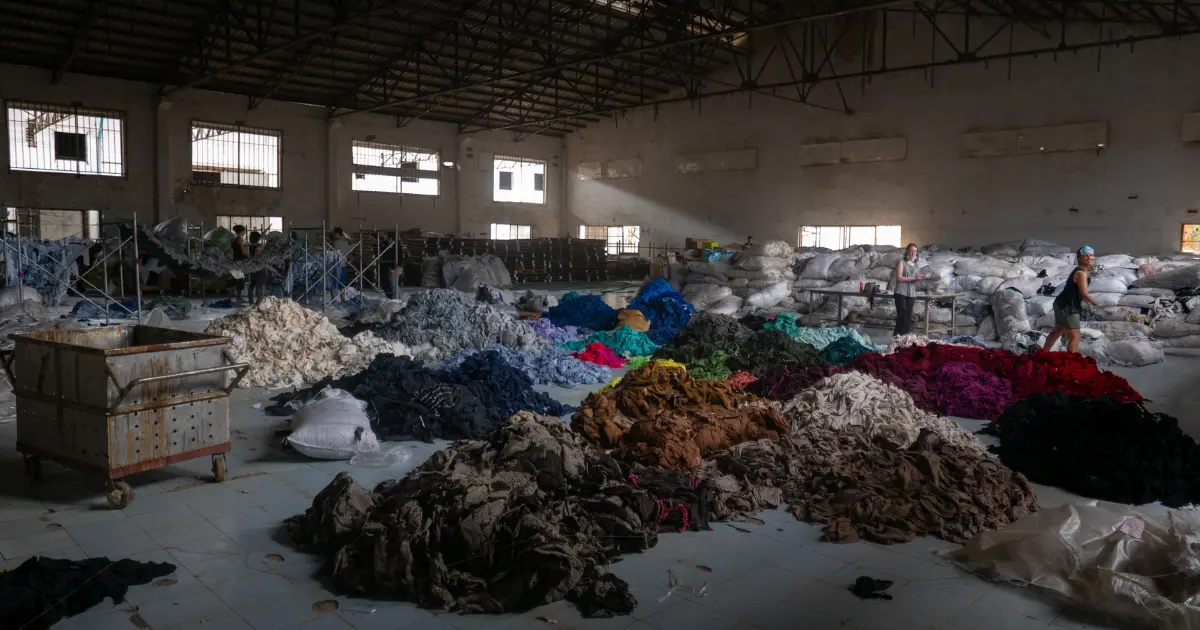

In accordance with a report from Grand View Research, the global textile market size was valued at USD 1,695.13 billion in 2022 and is anticipated to grow at a 7.6% CAGR from 2023 to 2030.
The textile industry is growing rapidly, and with this growth comes an increase in demand for raw materials, modern production processes, and additional applications. The fiber and yarn sections are an essential part of the textile industry, and they are attempting to improve with unique solutions to meet industry standards and stay competitive. The textile industry is not only experiencing rapid growth but also facing changing and increasing requirements to cater to the demands of the market.
Looking ahead, IMARC Group projects that the market will increase at a compound annual growth rate (CAGR) of 14.59% from 2023 to 2028, reaching US$ 387.3 billion. Manufacturers are continually seeking ways to enhance their procedures as the demand for textile products rises.
The industry is also going through an intensive digital transformation process driven by increased consumer demand for personalized products. Technology is significantly altering the textile business as it develops. The textile industry is a highly competitive industry, and to stay ahead of the competition, manufacturers are constantly innovating and introducing new concepts, innovative technologies, and improved understanding of textile materials.
One of the significant shifts in the industry is the increasing focus on sustainability. As the environmental impact of textile production becomes more apparent, there is a growing need for the industry to embrace sustainable practices. This includes adopting closed-loop production, which involves making things that last and encouraging reuse, waste reduction, production efficiency, and particularly recycling, as these standards are becoming increasingly significant for businesses and trade.
The textile industry plays a significant role in environmental degradation, responsible for approximately 10% of greenhouse gas emissions and 20% of global wastewater, as highlighted by the UN Partnership on Sustainable Fashion. In response, companies are actively seeking eco-friendly alternatives in fiber and yarn production to reduce their environmental footprint.
Traditionally, the industry followed a linear economic model, producing textiles that end up in landfills. However, the circular economy approach has gained traction, promoting sustainability at every stage of production. Circular fashion focuses on recycling materials, using ethical raw materials, implementing eco-friendly solutions, and adopting efficient manufacturing processes to minimize emissions, waste, chemicals, energy, and water consumption, thus closing the production loop.
To ensure credibility and transparency, companies adhere to standards such as Bluesign Certification and the Global Recycled Standard (GRS). These rigorous standards assess all materials used in product development before entering production, ensuring a sustainable and responsible supply chain.
The yarn manufacturing industry is undergoing a transformative shift towards sustainable practices to minimize its environmental impact. Companies are focusing on optimizing the production processes of long and short staple spinning to reduce resource consumption and waste generation. Additionally, efforts are being made to recycle 100% of packaging materials, promoting a circular approach to packaging.
Innovations in dyeing processes are revolutionizing the industry. Dyeing methods that involve adding color to the polymer dope before extrusion are adopted, eliminating the need for water during the dyeing process while maintaining excellent color fastness. This breakthrough technique significantly reduces water consumption and contributes to a more sustainable production cycle.
One notable example is a Belgium-based company that has developed a latex and binder-free staple fiber for non-woven production. This breakthrough reduces water consumption, energy use, and carbon dioxide emissions by 35% without the need for additional agents. Furthermore, yarns are being produced by recycling pre-consumer garment waste, giving new life to unused materials.
In Italy, an industry has garnered attention for its creation of "Circular Denim" fabric, which utilizes regenerated and recycled materials. This innovative approach showcases the possibilities of circular fashion and highlights the potential for a more sustainable denim industry.
Moreover, advancements in man-made fiber manufacturing are enabling the recycling of partially oriented and fully drawn filaments. Through homogenization, spinning waste is reintegrated back into production, minimizing waste and maximizing resource utilization.
Recognizing the importance of sustainability, various organizations are launching initiatives to evaluate product impacts on the environment and raise awareness about the benefits of adopting a circular economy structure.
In conclusion, the textile industry is at a pivotal moment, facing both rapid growth and increasing demands for sustainability. As highlighted by industry reports, the global textile market is expanding at a significant rate, with a parallel rise in the Indian textile and apparel market. However, this growth must be balanced with a focus on sustainable practices and responsible production.
The shift towards sustainability is not only driven by environmental concerns but also by consumer demand for ethically produced and eco-friendly textile goods. As the textile industry undergoes digital transformation and technological advancements, there is an opportunity to integrate sustainable practices into every aspect of the production process.
By embracing sustainable solutions, adhering to rigorous standards, and fostering collaboration among stakeholders, the textile industry can pave the way for a greener and more responsible future. Together, we can create a circular textile economy that ensures longevity, minimizes waste, and prioritizes the well-being of the planet and its people.